D-Day: Albert Richards, Britain's youngest war artist, celebrated
- Published

Richards parachuted near to Sword Beach and fought, before setting to work painting
Britain's youngest official war artist, who fought on D-Day before painting the aftermath, has been celebrated on the 75th anniversary of the conflict.
Capt Albert Richards, from Liverpool, served with the 9th Parachute Battalion on 6 June 1944, near Sword Beach.
He painted battles as his unit moved through France, but was killed in action the following year aged 25.
Jessie Petheram, from Liverpool's Walker Art Gallery, said he "really was a great talent".
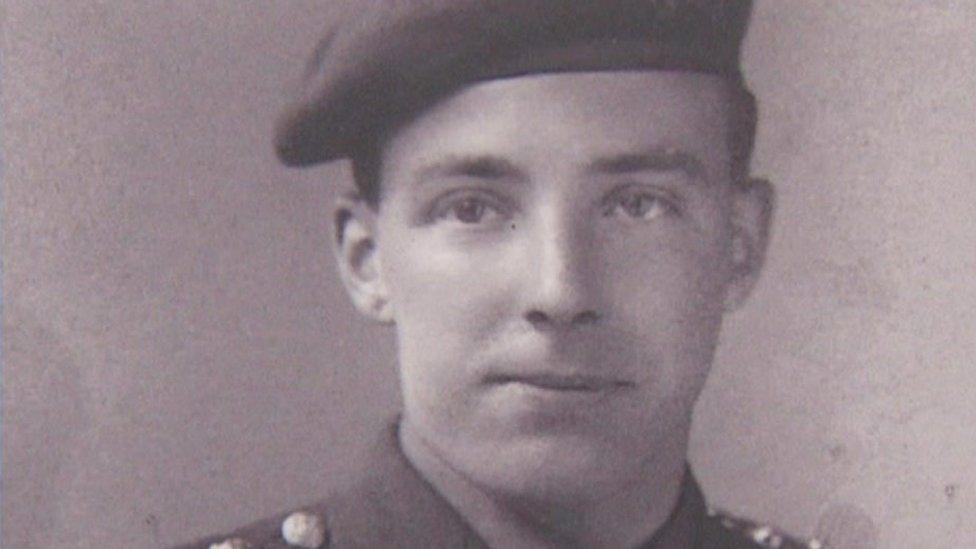
Richards was accepted to the Royal Academy of Art before war broke out
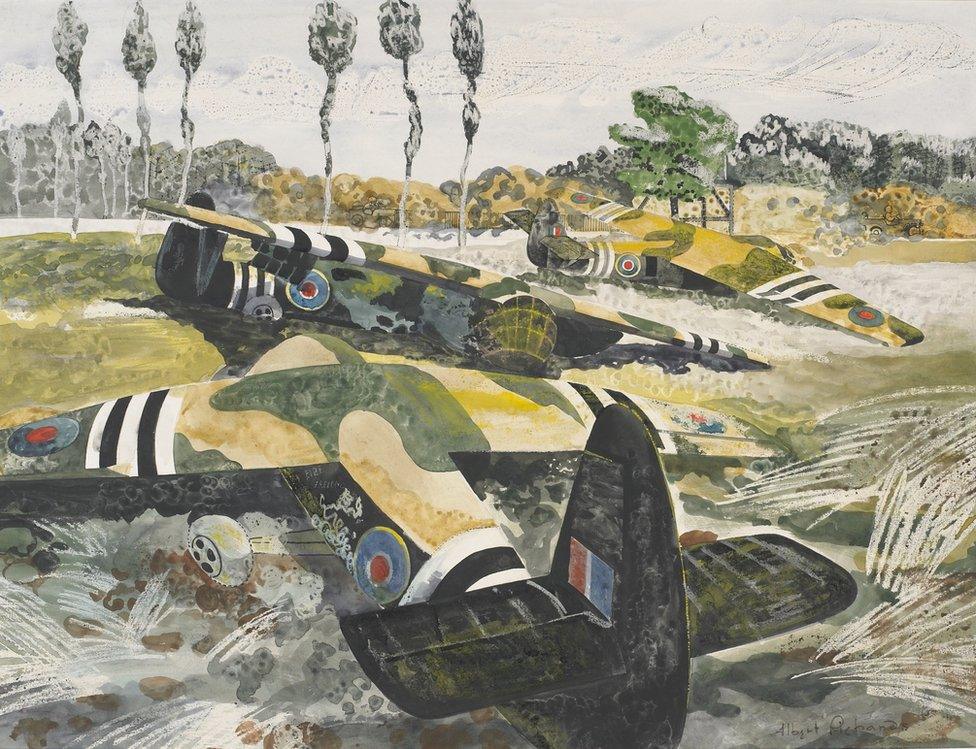
Richards would paint in watercolour, as it allowed him to capture scenes quickly
Ms Petheram, the gallery's assistant curator of fine art, said Richards used watercolours for speed and painted "quite bleak colours and quite angular shapes to convey the horror of war and the destruction of the natural world".
Richards was made Britain's youngest official war artist in 1944, after transferring from the Royal Engineers, and given the honorary rank of captain.
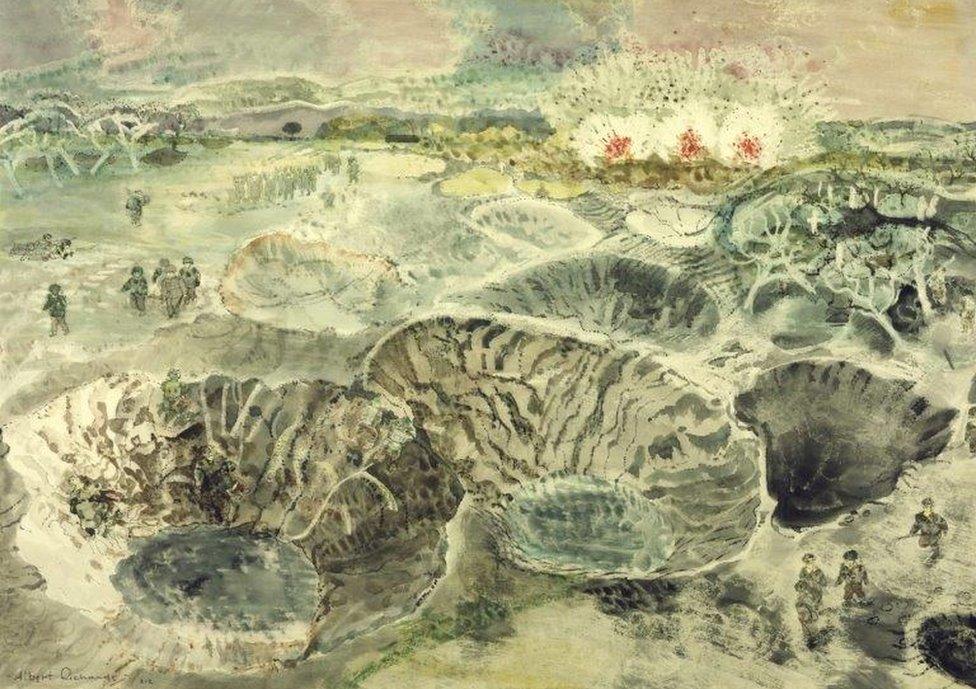
Withdrawing from the Battery features Richards' friend lying injured in a bomb crater
Carrying sketch book and pencils along with his heavy military kit, he captured the aftermath of the Normandy campaign, having landed on Sword Beach, ahead of the armada, on D-Day.
He produced two paintings that captured that attack, The Landing: H Hour Minus 6 and Withdrawing From the Battery.
The second work included his friend Alan Jefferson, who was lying injured in a bomb crater.
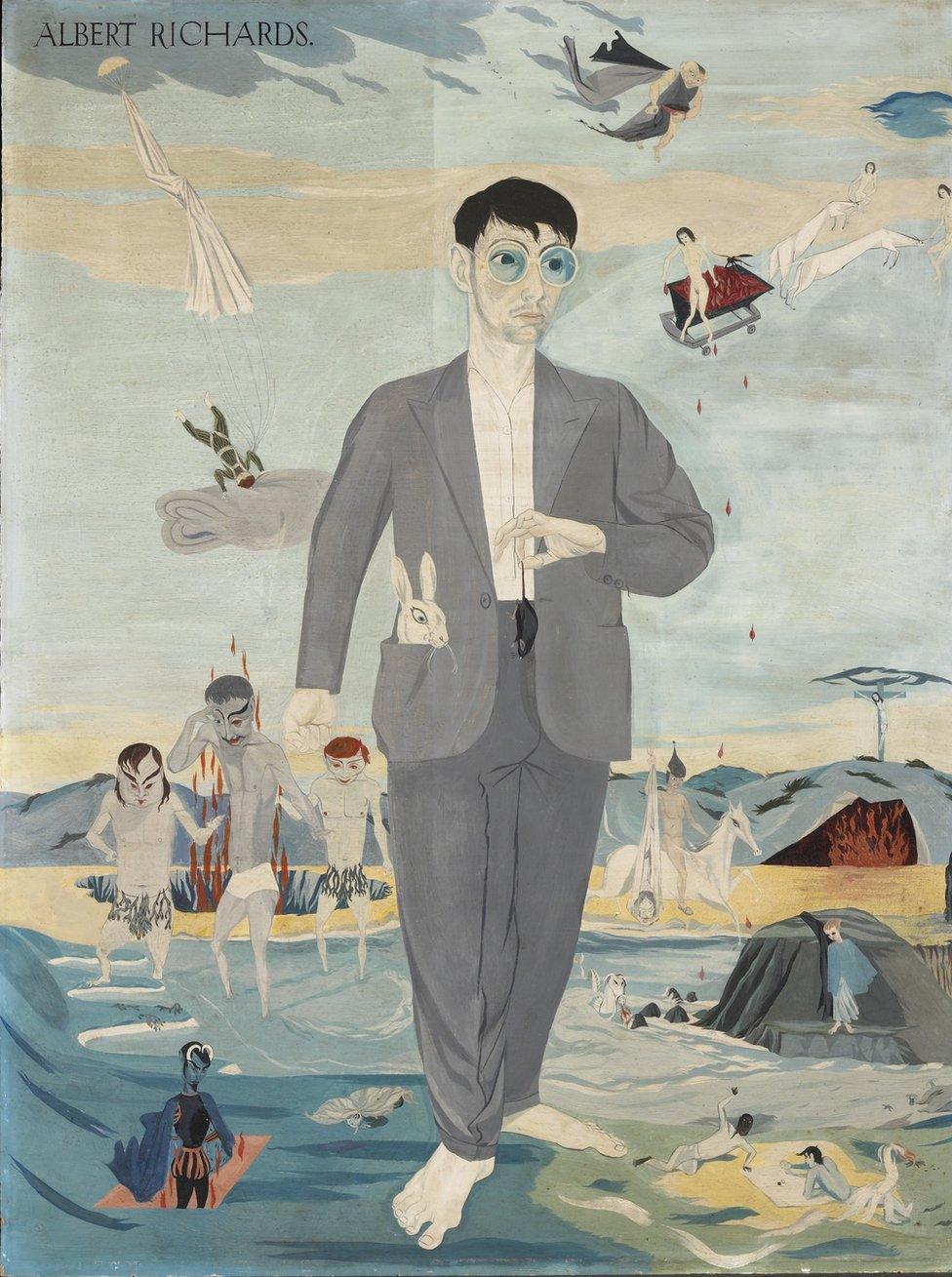
A self portrait produced in 1939 shows Richards' work before the war
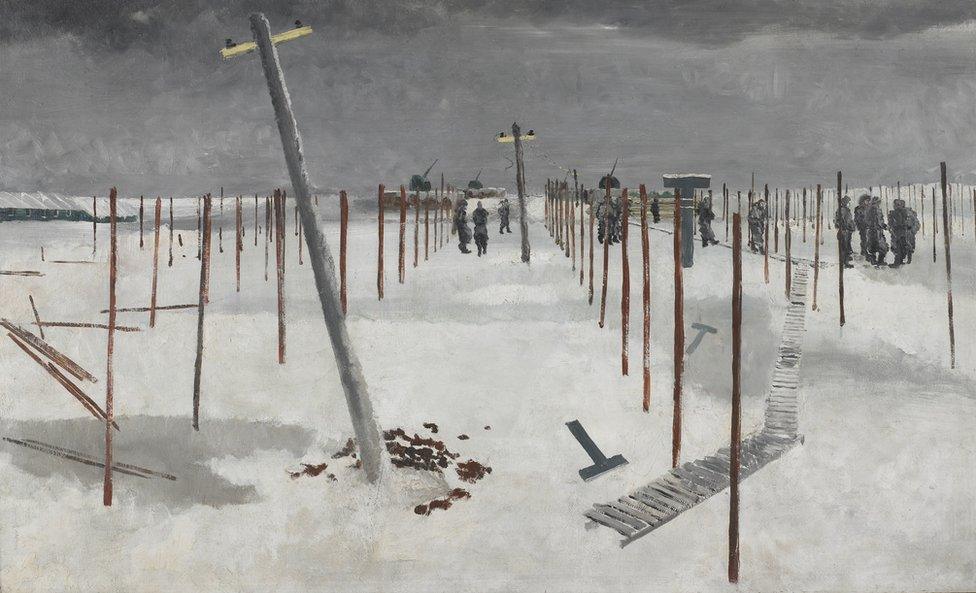
He painted for the whole war, capturing his time with the Royal Engineers in 1941
His work, which can be seen at the Imperial War Museum and The Tate in London and at the Walker Art Gallery in his home city, featured prominently in a 1944 exhibition at the National Gallery called Wartime Paintings of the Army Air Forces.
However, he was killed on 5 March 1945 when he drove his jeep through a minefield near the Dutch-German border.
Ms Petheram said was recognised as a "great artist" by his fellow war artists, adding: "He really was a great talent."
- Published6 June 2019
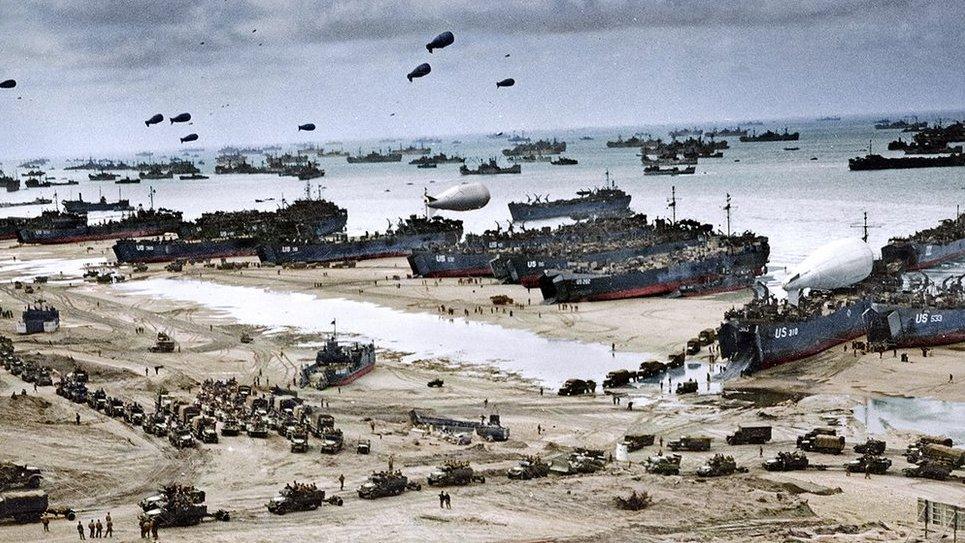
- Published6 June 2019
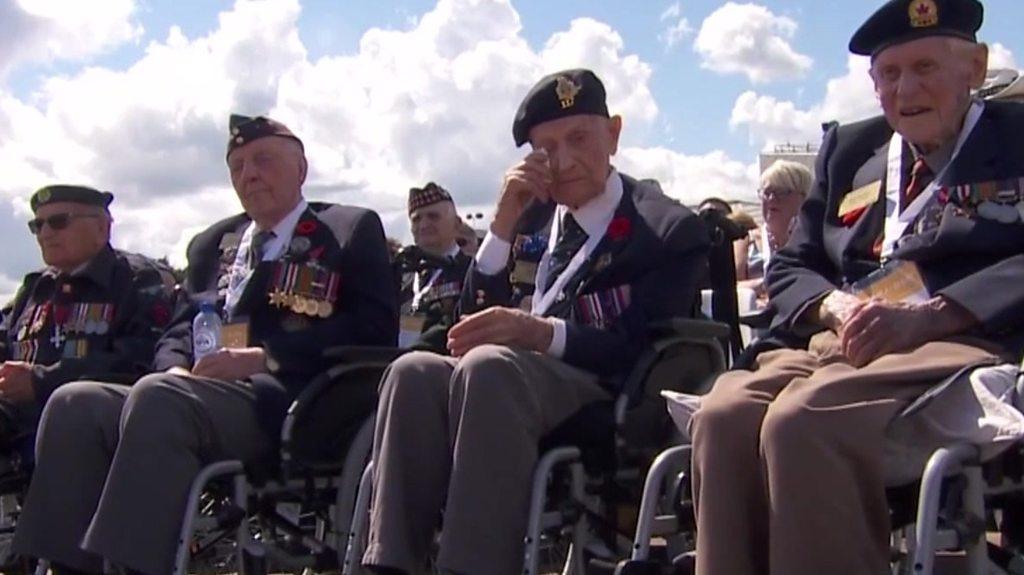
- Published6 June 2019
